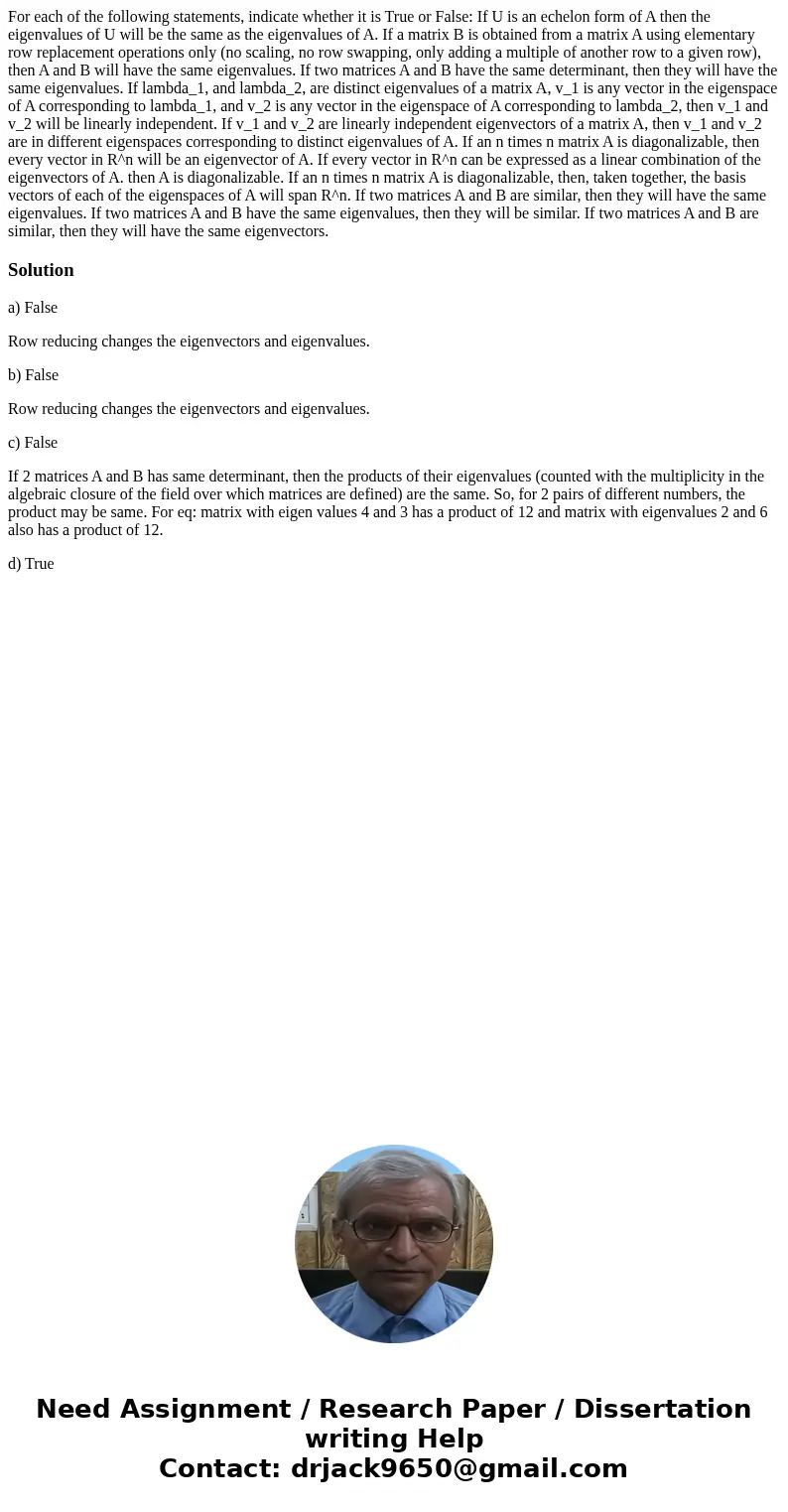For each of the following statements indicate whether it is
For each of the following statements, indicate whether it is True or False: If U is an echelon form of A then the eigenvalues of U will be the same as the eigenvalues of A. If a matrix B is obtained from a matrix A using elementary row replacement operations only (no scaling, no row swapping, only adding a multiple of another row to a given row), then A and B will have the same eigenvalues. If two matrices A and B have the same determinant, then they will have the same eigenvalues. If lambda_1, and lambda_2, are distinct eigenvalues of a matrix A, v_1 is any vector in the eigenspace of A corresponding to lambda_1, and v_2 is any vector in the eigenspace of A corresponding to lambda_2, then v_1 and v_2 will be linearly independent. If v_1 and v_2 are linearly independent eigenvectors of a matrix A, then v_1 and v_2 are in different eigenspaces corresponding to distinct eigenvalues of A. If an n times n matrix A is diagonalizable, then every vector in R^n will be an eigenvector of A. If every vector in R^n can be expressed as a linear combination of the eigenvectors of A. then A is diagonalizable. If an n times n matrix A is diagonalizable, then, taken together, the basis vectors of each of the eigenspaces of A will span R^n. If two matrices A and B are similar, then they will have the same eigenvalues. If two matrices A and B have the same eigenvalues, then they will be similar. If two matrices A and B are similar, then they will have the same eigenvectors.
Solution
a) False
Row reducing changes the eigenvectors and eigenvalues.
b) False
Row reducing changes the eigenvectors and eigenvalues.
c) False
If 2 matrices A and B has same determinant, then the products of their eigenvalues (counted with the multiplicity in the algebraic closure of the field over which matrices are defined) are the same. So, for 2 pairs of different numbers, the product may be same. For eq: matrix with eigen values 4 and 3 has a product of 12 and matrix with eigenvalues 2 and 6 also has a product of 12.
d) True

 Homework Sourse
Homework Sourse